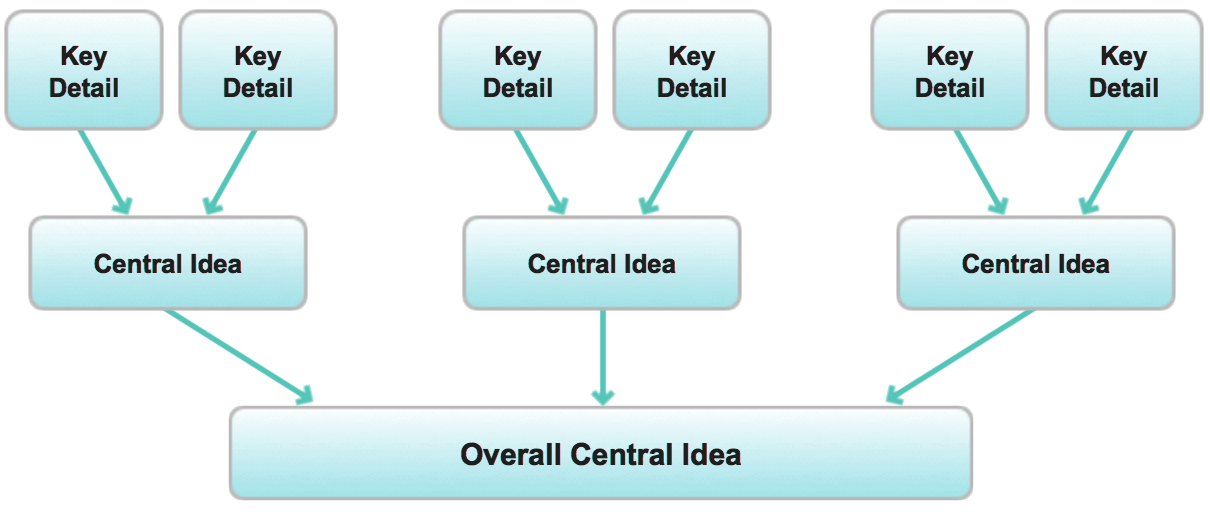Learn It
The central idea is the big idea or the most important message that the author is trying to convey. The central idea tells what a text is mainly about – usually in one broad sentence. Determining the central idea will help you to understand and analyze what you are reading. The overall central idea of a text emerges through the central ideas and supporting key details that are conveyed through the development of the text.
Once you have determined the overall central idea, you can use it to develop a summary, which includes the most important central ideas and supporting key details. Summarizing a text helps to communicate the most important ideas in a clear and concise manner.
Explore the slideshow below to learn how to determine the central ideas and summarize a text.

As you prepare to read, think about the central idea of the text. Read the title and notice any prominent text features such as photographs and captions. Ask yourself:
- What is most important in this text?
- What is the biggest idea?
- What does the author want me to learn?
- Why does this information matter?

As you read the first paragraph, begin connecting the key details to your initial understanding of the central idea. Keys details are significant pieces of information like facts, definitions, explanations, quotations and additional text features presented by the author.

As you continue reading, think about and analyze the details the author is using to construct the central idea. Ask yourself questions about why the author might have included a particular fact or idea.
- Is the information significant?
- Does it provide evidence or an explanation of a bigger concept or idea?
- How does it relate to previous ideas and details in the text?
- Is it a clue to the most important point the author is trying to make?
- Does it help to reveal the central idea?

The central idea will develop over the course of the text. One way to keep track of this development is to pause after a section of reading and ask yourself:
- What is the central idea of this section?
- Which key details support the central idea?
- How has the central idea changed from the last section I read?
- How is my understanding of this scientific concept deepening?

Just as you synthesized key details to determine the central ideas in different sections of the text, you can synthesize the central ideas from the different sections of the text to determine the overall central idea.

Central ideas and their supporting key details are the building blocks of a good summary. When you summarize a text, use the overall central idea to form your topic sentence. Select and organize the most important details that support the overall central idea. Synthesize these details into ideas that best develop your summary.

Remember, a summary should be written in your own words, so restate information from the text; do not copy sentences directly from the text. Be sure that your summary is organized in a logical order so that it is easy to understand.










